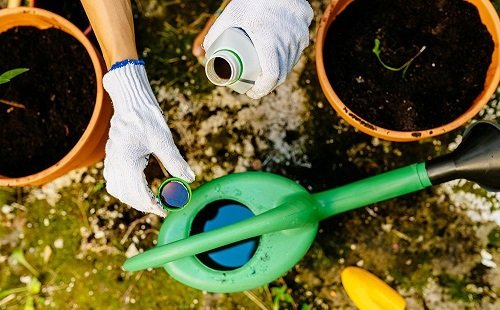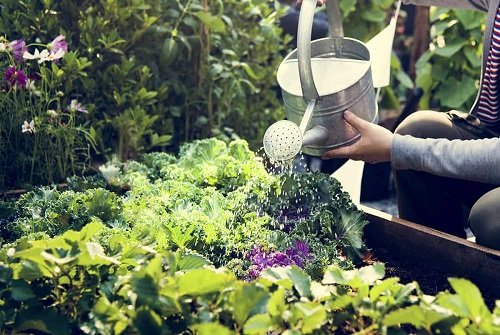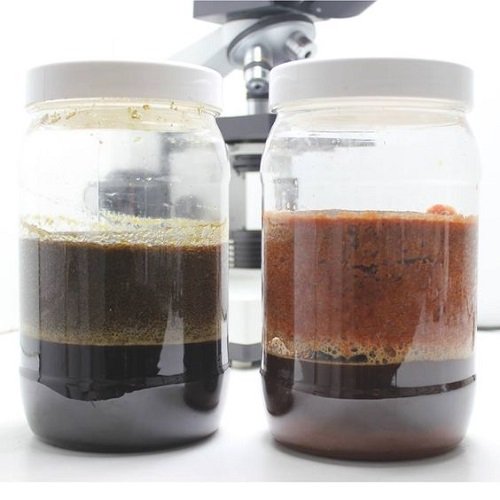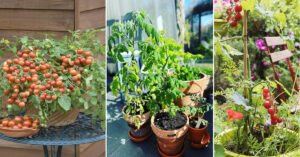
DIY Plant Probiotic Ingredients for the Incredible Garden
Here are the best DIY plant probiotic ingredients with essential microorganisms and beneficial bacteria to help them thrive!

Probiotics may play an important role in improving immunity, promoting gut health, protection against potential diseases, and promoting potency in humans. If used properly, they act equally in plants, helping them to thrive and stay green. Let’s take a look at the best DIY plant probiotic ingredients.
Plant Probiotic?
Probiotics are salutary microorganisms similar as bacteria, fungi and protozoa.
You’ve presumably heard of using probiotics for mortal health, and that we should eat dressed products like yogurt, kefir, sauerkraut,etc., or take probiotic supplements. These probiotics are meant to ameliorate our gut microbiome, which benefits our digestion, vulnerable system and other areas of our health.
plants have a microbiome too! And a flourishing population of helpful probiotics in the soil can help shops absorb nutrients in the soil, ameliorate their vulnerable system, help them recover from complaint and pest infestations, regulate water uptake, and else ameliorate just about every physical process a factory must carry out.
Probiotics can also help your plants ensuring growth,bigger and healthier leaves and flowers, a stronger root system, and sturdy stems and more production in vegetables . Not only can these microorganisms make your plants healthy, but they can also make them more beautiful and environmentally friendly !
DIY Plant Probiotic Ingredients
1. Garden Probiotics

Necessary equipment:
- One- quart mason flask with cap
- 1 Capsule of quality probiotic
- ¼ Cup theater molasses system
- Top of Form
Process:
- Add1/4 mug molasses to the flask.
- condensation the contents of a probiotic capsule onto molasses.
- adjoin water to the flask and step in the cap and jiggle till the contents get dissolved.
- Keep the flask in a warm area( 80- 90 F) until a white/ argentine material sets on the bottom( 1- 7 days). If you aren’t using it incontinently also store it in a refrigerator.
- A white or argentine substance at the bottom of the flask is a sign of successful culturing. Adulterate it in a liter of water and use it to water your plant.
Benefits:
Beneficial fungi and microbes add vital nutrients to the plant and the plant provides them with sugar. This relationship results in better production, increased pest resistance, and better broad brush health of the plants.
2. Worm Casting Tea
Necessary equipment:
- 5 gallon pail (larger on doubling tea, etc.; less if made in small quantities)
- 4 gallons of water (use immaculate rain or well water as it does not contain chlorine; otherwise use megacity water, but leave it for 24 hours before proceeding – chlorine is really unpredictable and dematerialized on its own will go)
- 5 to 6 mug worm castings
- 3 soupspoons molasses( encourages the growth of healthy microorganisms)
- penetrable material for a compost tea bag( rubbish cloth, dish kerchief, old t- shirt, etc). voluntary but will help your watering can or spot bottle from congesting when it’s time to use the tea. Alternately you can pour the finished tea through a fine mesh strainer into your watering can.
Process:
- Mix all the constituents in a pail with 5- gallon water and stir duly.
- Actuate the bubbler for a day and your probiotic is ready to use.
- It’s recommended that to use the result incontinently.
- Still, also don’t keep it for further than 2- 3 days, If you have made further than demanded.
- Simply water the factory with the result or use it as a spray.
Benefits:
It helps to meliorate the roots of the plant by repopulating the soil with salutary microbes. The compound also helps the soil withhold water for a longer time. It’s also proficient for leafage shops as it helps them to subsist bushier.
3. Compost Tea

- 5 gallon bucket
- 1 shovel-scoop of good-quality finished compost (as you’ll see, the quantities here square measure super-scientific)
- Non-chlorinated water (rain water is nice, too!)
Compost tea is made in nematodes, oxygen-loving (aerobic) bacteria, microbes, fungi, and different helpful microorganisms that facilitate to boost the nutrition within the soil, serving to the plants to grow quicker with redoubled yields.
Benefits:
High in microbiological activity, it helps the soil retains all its nutrients and eliminates root diseases. It additionally promotes the standard of mature compost, serving to within the moldering of organic matter with helpful bacteria and fungi.
4. Lactobacillus
Necessary equipment:
- Rice
- Water (nonchlorinated)
- Milk (unpasteurized is best, organic milk if milk is unavailable)
- Molasses/brown sugar
- Mesh filter
- Glass Jars
Process:
Fill 1/2 a jar with rice (I use white however any can work) then fill the remainder of the manner with water. Let this soak for regarding twenty minutes and shake a number of times. The water ought to become cloudy. Next, strain the water into another jar, cowl with gauze and a band. This currently has to sit for 4-7 days reckoning on temps. We are unit searching for the rice wash to separate into three totally different layers and have a small amount of a bitter smell. The highest layer is usually mildew, the center layer is microorganism and alternative bacteria (what we have a tendency to want) and also the bottom layer is starches and alternative byproducts of the method.
Benefits:
Lactobacillus works aboard in correct with the ferment fungi, which, together, helps to accelerate the breakdown of plant residues, serving to make useful aerobic microbes.
5. Yogurt and Buttermilk
Mix 4-liters of water with 1-liter of buttermilk.
Stir the solution well and fill it within the spray bottle.
Shake the answer well before application and spray it on the foliage. Use it a lot of throughout monsoon, as plants square measure most at risk of fungous problems throughout the wet setting.
Use bitter milk for older and established plants. For the younger saplings, use contemporary milk.
You can re-apply milk spray in 10-15 days of interval.
Some gardeners like golf shot a copper wire within the milk for some of the hours to form the milk sourer before the appliance.
Using curd and milk on plants may be a good way to stay pests in check. They even have antifungal properties and supply smart micronutrients to plants. Combine 50-80 grams curd with two liters of water and spray it each 20-30 days on plants.
Mix milk during a 1:1 magnitude relation with water and pour it on the roots each 25-30 days.
Benefits:
Works as a wonderful organic fertilizer for the plants. They additionally defend the plants from pests as they need antifungal properties.
6. Fermented Plant Juice

Necessary equipment:
- 2/3 full Plant making quick growing shops before morning
- 1/3 weight of plant making Brown sugar or molasses
- Depends on Water If demanded, just enough to excel the plant substance
- Complexion teacup with cloth kerchief
Process:
- Collect plant making
- Cut and signify the plant making
- Method brown sugar
- Pack the plant-material- and- brown-sugar admixture into a vessel
- Check the vessel after 24 hours and acclimate the volume if obligatory
- Let the contents raise untroubled
- Separate the liquid from the solids
- Store the FPJ correctly. This growth supporter helps in the active growth of the shops. Fruit/ Veg/ Factory timber is permitted to raise for 7- 10 days with sugar and theater molasses. The procedure draws the authorities out of the factory making via osmosis and also serves as a food origin for the microbes bearing out the turmoil process. It works really well for flowering shops and vegetables.
This growth booster helps within the active growth of the plants. Fruit/Veg/Plant material is permit to ferment for 7-10 days with sugar and garden molasses. Attracts the juices out of the stuff via diffusion and conjointly is a food supply for the microbes concluding the fermentation process. It works rather well for flowering plants and vegetables.
Benefits:
It enhances the general productivity of the soil, makes foliage bushier, and adds a lot of sweetness to the fruits.
Why we Must Use Probiotics for Plants
Just like humans, plants conjointly would like helpful microorganism. They are the same as gut probiotics and guarantee mobilization of nutrients, interference of plant diseases, and providing the required dose of iron, magnesium, and metallic element, all of that contribute to higher overall growth.





Can you be more specific about the content of your article? After reading it, I still have some doubts. Hope you can help me. https://accounts.binance.com/pt-PT/register?ref=T7KCZASX